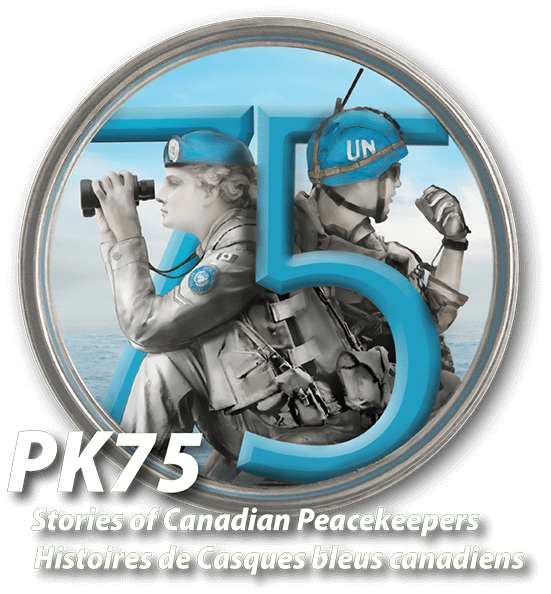

Military Family, Canada
David Harries
Current Location: Kingston, ON, Canada
Travels for UNPROFOR
I was Force Engineer of the United Nations Protection Force (UNPROFOR) from September 1992 to October 1993. As a long-time operational field engineer, I knew my remit would include issues of mobility, mines, water, accommodation, and force protection. I also knew that Canada had deployed, for mission-level tasks, a Combat Engineer Regiment (CER) and Finland a Combat Engineer Brigade (CEB), both very capable and experienced units. I also knew that all troop-contributing countries (TCC), as part of their mission-commitment, were supposed to include sufficient engineering capability to meet their own needs. Not incidentally, for what was to come, I knew from previous professional and personal visits to the Balkans that the combination of the winters and the terrain frequently produced brutal, even destructive conditions.
But my "knowledge" on Day 1 quickly proved very fragile in the face of realities in place and to come; realities frequently apart from what the main combatants in the break-up of Yugoslavia provoked in terms of engineer operations. First, Canada announced the withdrawal of the CER, and then Finland announced the withdrawal of the CEB. The engineering competence of most of the TCCs proved varied, from very little to none. And the UN? It was totally unprepared for a four-season mission, so out of touch with its demands that when officials finally awoke to the fact that UNPROFOR was to have winters, they "knew" that tents were sufficient, “as always”, and military peacekeepers did not need as much space and warmth as civilian ones. In addition, none of the three Force Commanders (FC) during my tour (Indian, Swedish, and French) were engineers, and so were little interested in engineering matters unless one of their nationals called for help. But the most telling early lesson was that the "governor" of what could and would happen in UNPROFOR was not the FC, but the Chief Administrative Officer (CAO). Together with his loyal team of lesser "chiefs" (i.e., Accommodation (his wife), Procurement, Finance and Logistics), he made the decisions on everything tangible.
My time assigned to UNPROFOR quickly became one of almost continuous travel - in-country, in Europe, and further afield. The reasons for the trips were almost as varied and diverse as the destinations, with most provoked by the steady "drum-beat" of new UN Security Council Resolutions, at least 18 of which were promulgated only for UNPROFOR and in only the 16 months I was preparing for or in the mission. This unprecedented pace of change guaranteed continuous confusion, contradictions, and mission-internal conflict.
The following lists indicate my travel destinations and reasons for the visits. Most destinations I visited on more than one occasion.
Travels in the unravelling Yugoslavia
Dubrovnik for damage assessments. Neum to inspect B-H’s only access to the Adriatic. Prevlaka to confirm demilitarization and inspect mines complex. Knin to visit Prevlaka Dam before and after its deliberate destruction, Rovinj to inspect port of entry for Canadian containers, Belgrade to represent UNPROFOR at meetings and Christmas with Attachés. Skopje for preparations for UNPROFOR-Macedonia and meetings on post-traumatic stress disorder. Sarajevo to advise on force protection and to attend UN HQ meetings. Bihac to visit French contingent on order of French FC. Banja Luca on contraband and smuggling issues. Slavonski Brod for border incursions and unregulated refugees. Komanovo to observe sanctions-busting truck convoys into Serbia. Osijek for evaluation visits to the Belgian and the (tragic) Soviet contingents. Vukovar for human losses due to destruction of cathedral, Danube smuggling, mass graves search, and breaches of UN-ordered storage of heavy weapons. Srebrenica for route reconnaissance and force protection.
Travels in Europe and Scandinavia
Slovakia was the focal point of many visits between February and June 1993 when I was tasked to lead the creation, design, manning, equipment, and training of a combat engineer battalion to replace the departing Finns and Canadians in Croatia. Austria for UNPROFOR banking, and UN policy meetings. Switzerland for meetings on plans and policies to deconflict the many UN Security Council Resolutions. Finland to teach peacekeeping operations. Italy to meet with HQ of Allied Forces South on how to rescue UNPROFOR if threats materialized and how to respond to the failure of the No-Fly Zone. Hungary to confirm the approved route for Slovak battalion convoys.
Travels in Asia and North America
Malaysia for seven days with two Danish mine-warfare instructors to Kuala Lumpur and Butterworth to prepare the battalion committed to UNPROFOR. USA at the UN HQ in New York to arrange for winter accommodation, and in Canada to assess a formal offer of winter accommodation structures.
To cap the travelogue, very early on the day before I returned to Canada, an order came to lead a team inspecting the remains of a Danish UN truck that had been fired on and destroyed on a booby-trapped bridge.
Biography
A Canadian citizen since birth, he has lived in 20 countries and paid between one and 20 working visits to another 94.
After Canadian military college and English education as a nuclear engineer, he has worked for 63 years in the public and private sectors as a military officer, as a consultant on personal and corporate security, and as a senior advisor and professor in heavy engineering, national development, humanitarian aid, post-conflict and post-disaster response and recovery, executive development in strategic foresight, and post-graduate university education.
He became committed to the practise of Foresight in 1974 when, as a commander in the UN Peacekeeping Force in Cyprus, his experiences, in the run-up to an increasingly plausible threat of Turkish intervention, during the invasion on 19 July with its still-evolving aftermath proved that much of what happened in 1974 might have been significantly less severe, and the scope of the consequences until 2023 much reduced, had the UN exercised any foresight.
Education. Schooling in eastern Canada was followed by the UK equivalent of Junior Matriculation at Embley Park (boarding) School in Romsey. University education was received (Dipl Ing) at College Militaire Royal de St Jean, QC, (B Eng Physics) at the Royal Military College, Kingston, ON, and U of London, England (MSc and PhD in Nuclear Engineering).
Committed to life-long learning, Harries achieved tertiary-level qualifications at several Canadian and non-Canadian institutions. These include the Online Interactive Distributive Course from the Naval Postgraduate School in Monterey, California; the Executive Seminar from the Management Centre Europe, Amsterdam; the Canadian Army Staff College, Kingston, Canada; the Armed Forces Staff College, Norfolk, USA; the Command and Staff College, Toronto, Canada; and the National Defence College of Canada, Kingston.
While in uniform, beginning in 1960, he was Cadet Wing Commander at both CMR de St Jean and RMC Kingston; the personal Military Escort to Lucy Baines Johnson for a NATO Azealia Festival, Norfolk; Deputy and then Troop Commander of Canada’s only Armoured Engineer Troop RCE, in 4CMBG, West Germany; Senior Analyst and Program Designer for the Close-Out Control Centre, Soest; Commanding Officer, 1 AB Field Squadron, Canadian Airborne Regiment, Edmonton; Commander, UN Nicosia International Airport Task Force, Cyprus; Coordinator, FMC HQ Operations Centre; SSO Joint and Combined Operations at the Canadian Forces Command and Staff College; Deputy Commander and Acting Regimental Commander, Canadian Airborne Regiment, Petawawa; Director Military Engineer Operations, NDHQ; Director, then Director Curriculum Planning and Coordination, then Deputy Commandant of the National Defence College; Military Assistant to the DG Nuclear Safety for the Nuclear Submarine Program, Ottawa; Founding Director of The Centre for National Security Studies, Kingston; Senior Analyst for DGPE Evaluation of CF Peacekeeping, NDHQ; Force Engineer, UNPROFOR; Senior Analyst in the Morton Study of CF Professional Development. He left the military in 1995.
As a civilian, most activity over nearly three decades has been in the fields of civil-military relations, Human Security development and resilience, and executive professional development. Significant positions included: CANCAPS coordinator of Human Security Research and Outreach, Canada, International Fellow (the first) at the Indonesian National Resilience Institute (LEMHANAS – Suharto’s school for very senior military and civilian officials) in Jakarta; International Fellow (the first) at the Centre for Strategic and International Studies, Jakarta, responsible for developing a Proposal for an ASEAN Peacekeeping program and centre; Strategy Analyst for Placer Dome Inc. operations in Indonesia (with involvement on the Bre-X scandal); Director, Human Security Engineering for Maccaferri Asia (involving liaison, marketing, branding and sales in 12 countries between the UAE and Pacific USA (Hawaii); (Acting) Managing Director, Tingey and Associates Management Consultants, Singapore; Executive Director/Associate Professor of the Royal Military College Master of Arts Program - Security and Defence Management and Policy; Contractor to the Canadian Defence Academy for design and delivery of Seminars on Civil-Military relations and Security Foresight in Canada and seven other countries; Associate Executive Director, Foresight Canada, Canmore, AB; Head, Canadian Node of the-then 40+ Nodes of the global Millennium Project, Washington; Chair (2013-17), Investment Committee member and contributor to the Arctic security and sovereignty project of the Canadian Pugwash Group and, since 2005, Assistant Coach – Forwards of the RMC Men’s Varsity Rugby team.
Currently, as a Fellow of the World Academy of Arts and Science, he promotes the use of Foresight as a member of the ER4H project and a contributor to another: E4HS.
He is the lead for Foresight activity in support of the NIWEE, based in the U of Ottawa, and President, Proteus Canada.
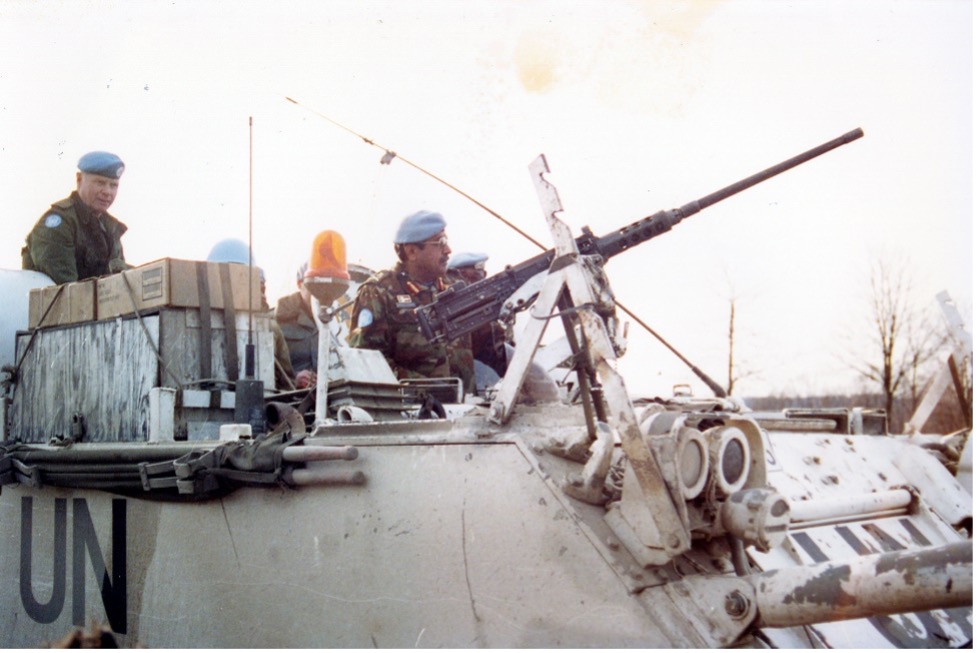
The Force Commander of UNPROFOR, General Nambiar, and me on a Canadian Armoured Personnel Carrier belonging to 1 Combat Engineer Regiment (1CER), as we made the first crossing of a bridge over the Sava built by 1CER.
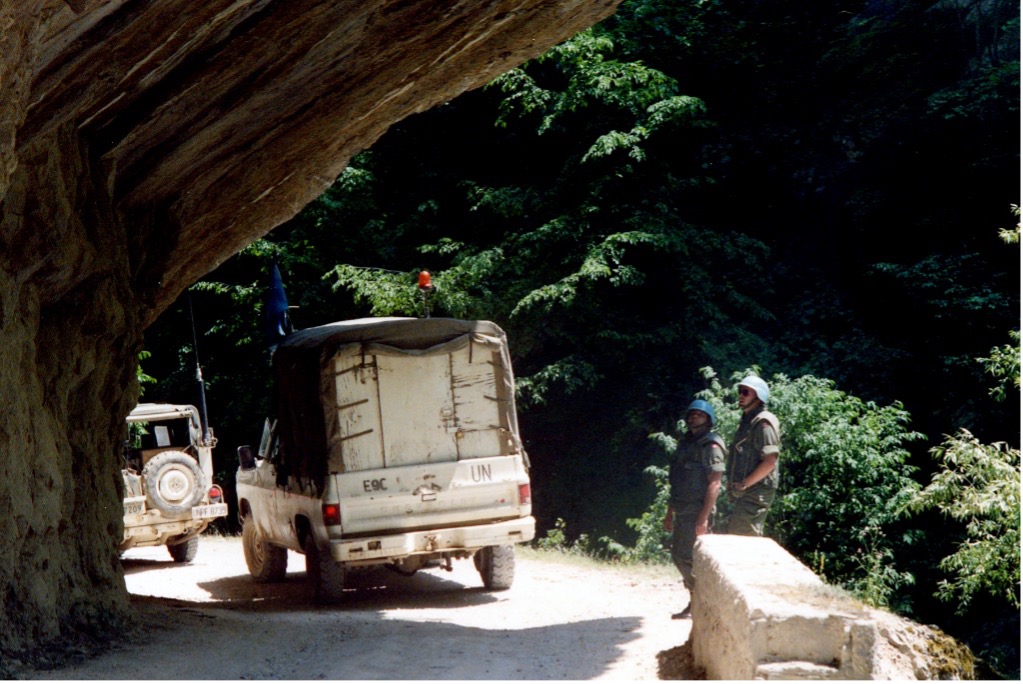
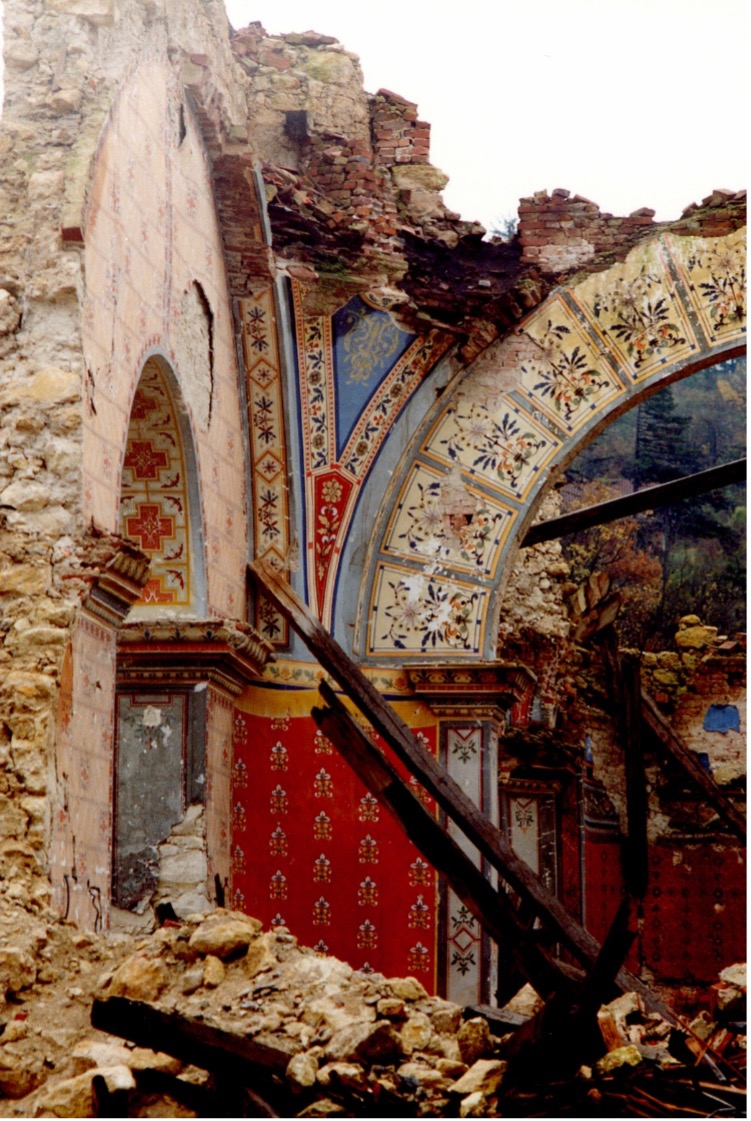
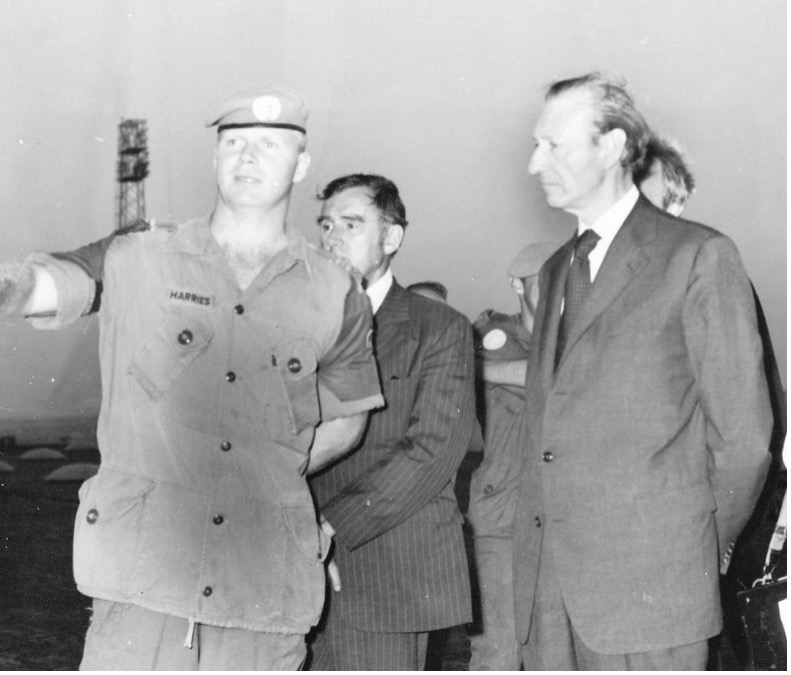
Briefing Kurt Waldheim, the United Nations Secretary General, on the state of invasion affairs from the roof of the remains of the Nicosia International Airport in early September 1974.


